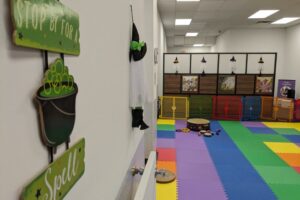 Between mid-year teachers’ assessments and AIMS Web standardized tests, January was a blur. Just before spring break comes the New York State ELA test and just after that, math. While educators tell us that testing does not interfere with good teaching, we see that, at the least, routines and attitudes change during testing season. How can we overcome being debilitated by the intrusiveness of testing?
Between mid-year teachers’ assessments and AIMS Web standardized tests, January was a blur. Just before spring break comes the New York State ELA test and just after that, math. While educators tell us that testing does not interfere with good teaching, we see that, at the least, routines and attitudes change during testing season. How can we overcome being debilitated by the intrusiveness of testing?
Parents help their kids in testing when they approach it as a fun game. A good first step is to download sample ELA and math state tests and find a quiet, focused hour to take parts of them. Ask yourself how you feel, and check your results. How did you do just now, and how have you done in the past? What have others done to help you be more successful in situations like standardized tests?
Speaking as a parent, our anxiety about tests often makes them brutal to all. If you can, put severe discomfort to the side, be honest with your child about how you have managed with situations like the tests you just took. Most importantly, keep a sense of humor and curiosity. Enjoy a snack. Remember to treat this like you are mastering a game together.
You can demonstrate how you use reasoning to eliminate options. Pretend, if you need to! But from my experience, it’s not too hard to find questions that don’t seem to have a clear, correct answer. When your child sees that answers are not always slam dunks for you, they feel more at ease. When you get excited about maintaining your poise and persevering to succeed, you bring joy.
Additionally, you help your child’s testing skills when you talk about school, and topics in which you share an interest. Higher level thinking questions abound on the ELA test, “thinking about thinking.” Questions and answers emerge through quality dialogue. If you like science, subscribe to a science magazine or share science articles electronically.
For many, the key is to start with what the child likes and is good at. I ask my son what he did in PE, recess, and math class. When he is doing math homework or we are kicking around a soccer ball, I follow three steps. First, observe without judgment. Slow down, listen, be curious. Second, understand what he is doing, let him know what I appreciate, and try it out his way. Finally, show him something fresh that connects to what he is doing. For example, I use a different strategy for a math problem, or kick the soccer ball from a new angle.
Testing season is not a delight for many, but bringing some joy to the experience will raise scores. If you can’t find any other way to talk about it, humor always seems to work. My daughter enjoys a nice self-deprecating “back when I was a kid” story. Whatever works for you to bring lightness and smarts will lead to quality conversation and necessary practice to succeed on the dreaded tests.
Kevin Miller spent seventeen years working in the New York City school system. He’s now a full-time tutor based in Tarrytown. You can reach him at kevsmilltutoring.com or kevinsmiller7@gmail.com.






